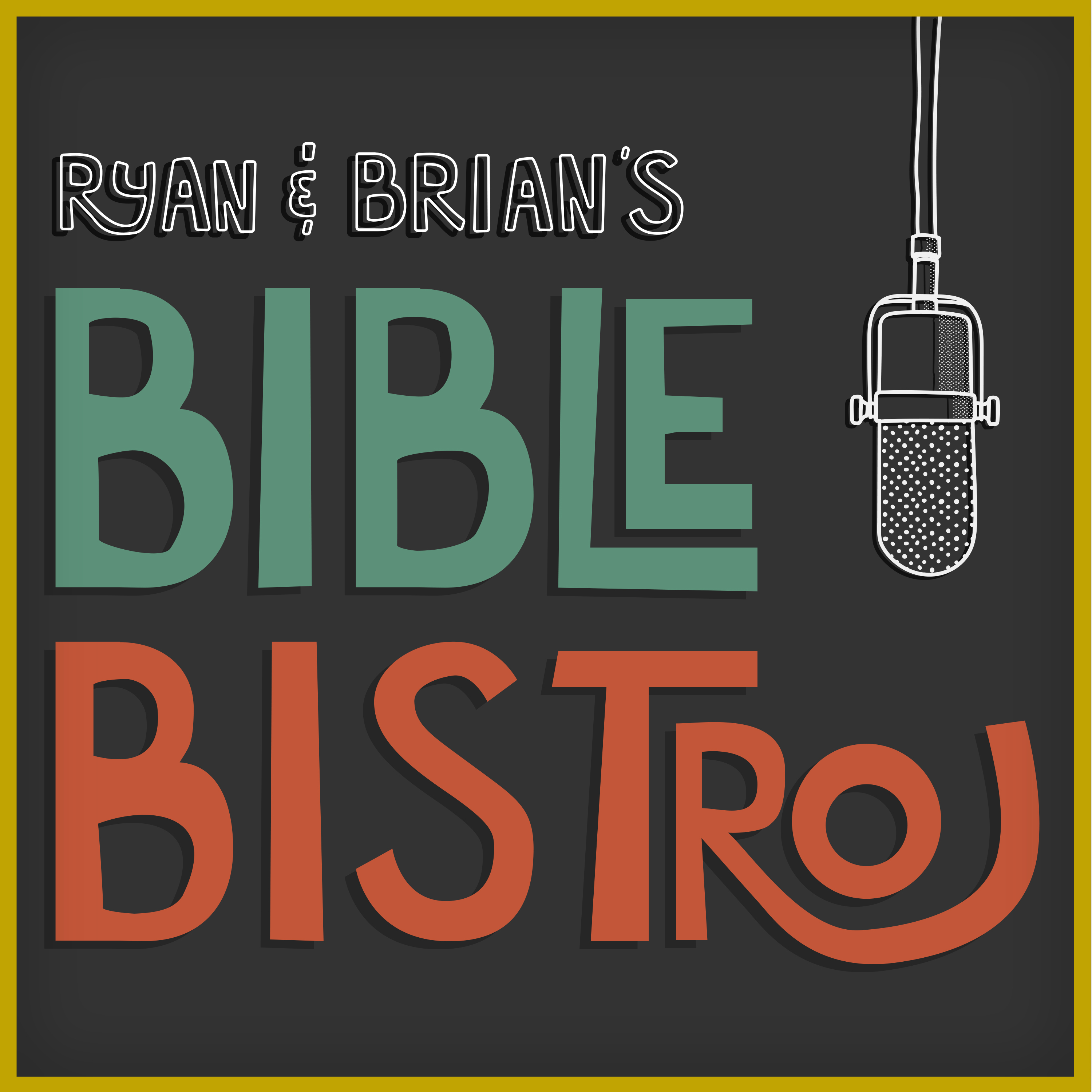Episode 191
Breaking Bad...Paragraphs
Overview:
In this episode, Ryan and Brian return after a brief hiatus to dive into the topic of breaks in Scripture—chapter, verse, paragraph, and section breaks—and how these editorial additions impact the way we read and interpret the Bible. They discuss the historical origins of these breaks, their purpose, and how they can sometimes obscure the original flow of the text. Using examples from John, Matthew, Isaiah, Philippians, and Colossians, they highlight “bad breaks” and offer practical strategies for reading Scripture more holistically.
Key Topics Discussed:
- Life Updates:
- Brian shares his experience at Northern Seminary, meeting his doctoral cohort, and taking a class with Matthew Bates, author of Gospel Allegiance and Beyond the Salvation War. Bates has promised to join the podcast in July.
- Ryan discusses his ongoing classes, including a deep-dive exegetical study of Philippians, which inspired this episode’s topic.
- Both hosts have been busy with school, leading to a brief podcast break, but they’re excited to be back.
- Historical Context of Breaks in Scripture:
- New Testament: Originally written without breaks, punctuation, or chapters, using conjunctions like kai (and) and de (but) to structure sentences.
- Old Testament: Some books, like Psalms, had natural breaks, but most chapter breaks were added in the 13th century by Stephen Langton, Archbishop of Canterbury. Verses were introduced in the late 16th century, with the Geneva Bible (c. 1607) being the first to include them.
- Purpose: Chapters and verses were added to make referencing easier (e.g., John 3:16), but they can sometimes disrupt the text’s flow.
- King James Version (1611): Early adoption of chapter and verse divisions, which explains why some verses are “missing” in modern translations due to improved textual criticism.
- Types of Breaks and Their Impact:
- Chapter Breaks: Can seem arbitrary, as humorously attributed to Langton’s “horseback” decisions.
- Paragraph Breaks: Editorial decisions in Greek texts (e.g., Nestle-Aland 28, UBS 5) and English translations (e.g., NIV) that vary and affect interpretation.
- Section Breaks: Headings in modern Bibles, added by editors, can influence how readers group and understand passages.
- Examples of “Bad Breaks” in Scripture:
- John 20:24-31 (Doubting Thomas):
- A section break after verse 29 separates Thomas’s story from the Gospel’s purpose statement (verses 30-31). Reading them together shows Thomas as a negative example, encouraging readers to believe without seeing, based on reliable testimony.
- Key Insight: Section headings can disconnect related thoughts, obscuring the author’s intent.
- Matthew 24-25 (Jesus’ Teaching on the Second Coming):
- The chapter break between 24:51 and 25:1 disrupts a continuous teaching about faithfulness and preparedness. The parable of the virgins (25:1-13) logically follows the servant parable (24:45-51).
- Key Insight: Chapter breaks can fragment unified discourses, missing the broader context.
- Isaiah 52:13-53:3 (Suffering Servant):
- The chapter break between 52:15 and 53:1 splits the introduction of the servant (52:13-15) from the description (53:1-3), which is part of the same discourse.
- Key Insight: Reading across chapter breaks reveals the full context of familiar passages.
- Philippians 1:12-15 (Paul’s Chains):
- A chapter break at verse 15 disconnects Paul’s discussion of his imprisonment advancing the gospel (1:12-14) from the motives of preachers (1:15). Without the break, it’s clearer that “some” preaching out of envy and rivalry are insiders, possibly motivated by financial jealousy.
- Key Insight: Paragraph and chapter breaks can create false pauses, altering interpretation.
- Colossians 1:9-15 (Paul’s Prayer):
- English translations combine long Greek sentences, ignoring full stops in the Greek text (e.g., after “endurance and patience” in 1:11). A semicolon in 1:14-15 connects the Son’s redemption to His divine image, which English breaks obscure.
- Key Insight: Sentence structure in the original Greek can reveal connections lost in translation.
- Strategies for Reading Scripture Holistically:
- Use Reader’s Bibles: These remove verse numbers, though chapter breaks may remain.
- Remove Breaks Manually: Copy text into a document, strip out chapter and verse markers, and read as a single unit.
- Adjust Bible Software Settings: Tools like Logos allow users to hide verse and chapter breaks for a cleaner reading experience.
- Read Large Sections: Treat breaks with skepticism and look for logical connections (e.g., “therefore,” “however”).
- Consider Context: The smaller the passage, the more critical the surrounding context becomes.
- Compare Translations: Differences in wording or breaks highlight areas for deeper study.
- Read Aloud or Listen: Oral reading or audio Bibles can reveal repeated phrases, puns, or narrative flow missed in silent reading.
- Use Tools like Logos: Bible software offers flexibility for studying texts without artificial breaks.
- Closing Thoughts:
- Ryan and Brian emphasize the oral nature of ancient texts, encouraging listeners to hear Scripture as it was originally shared.
- They invite feedback on topics or examples of problematic breaks and recommend resources like Reader’s Bibles.
- The hosts reaffirm their commitment to the podcast despite busy schedules and encourage listeners to share and support the show.
Resources Mentioned:
- Books:
- Gospel Allegiance by Matthew Bates
- Beyond the Salvation War by Matthew Bates
- The Unseen Realm (discussed in a previous two-part episode)
- Bible Editions:
- Nestle-Aland 28 (Greek New Testament)
- UBS 5 (United Bible Societies Greek New Testament)
- New International Version (NIV)
- Geneva Bible (c. 1607)
- King James Version (1611)
- Reader’s Bibles
- Tools:
- Logos Bible Software
- Website: thebiblebistro.com – Support the podcast, explore recommended resources, or contact the hosts.
Contact and Support:
- Feedback: Reach out with questions, topic suggestions, or examples of Scripture breaks via thebiblebistro.com.
- Support: Contribute monthly or check out the bookstore for recommended resources at thebiblebistro.com.
- Share: Spread the word if you find the podcast helpful!

